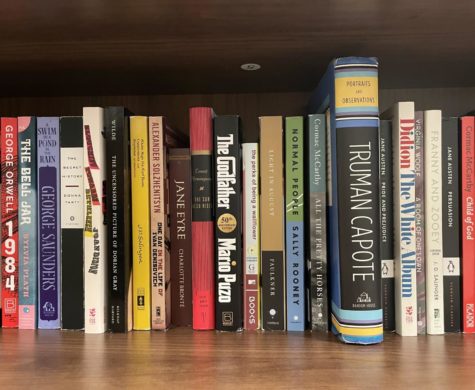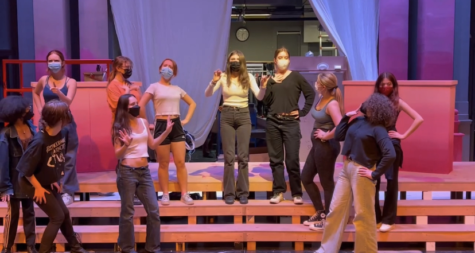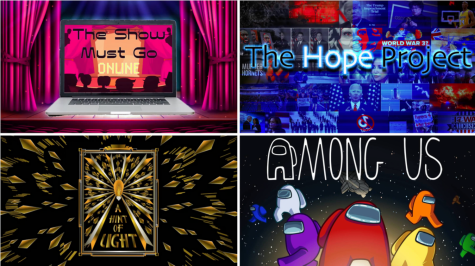Why “Selma” Is a Film, Not a Movie
On Thursday, January 15, the entire Berkeley Carroll upper school took to the 2-3 subway line to go to the Court Street Cinemas and see the film Selma. This trip was in honor of Martin Luther King Jr. Day, and was promoted by the city of New York which gave the option for students to see the film free of charge. Selma is a historical film centered on civil rights, but it zeros in on the voting rights marches from Selma to Montgomery. These marches were led by Martin Luther King Jr. (portrayed by David Oyelowo) and turned into violent bloodbaths that were portrayed in detail on screen. One of the most horrific scenes in the film was one towards the beginning in which four little girls were killed in the bombing of a church as a reference to the 1963 bombing in Birmingham, Alabama by white terrorists (see note below). Selma started out with this scene to set the tone for the rest of the film, which it did in a very surprising and sudden way. This scene also showed how innocent people were killed. Since this was the first scene of the film it also helped the audience know which side to “root” for (even though most people came into the film already glued to MLK’s side). If someone had come into the film completely oblivious to the setting and plot of the film, this scene could give them a bit of a nudge, if not a shove, towards the African American protesters’ side.
As the film went on, it was clear that the point of it was for the viewers to gain knowledge about the fight for voting rights. Music was used sparingly, albeit in the end credits when “Glory”, an original song by John Legend and Common was blasted through the speakers. This song, in fact, won “Best Original Song” at the Golden Globes. There was no weepy music during death scenes, and no proud, lively music during MLK’s speeches. In a way, this let the viewers decide how they wanted to perceive each scene, but it also made the film seem to drag on through each scene not quite giving the viewer clues as to what was going on. However, what Selma lacked in music, it made up for in slow motion violent scenes. Ava DuVernay, the director of Selma, made it her clear objective was to show every violent scene down to its most gruesome detail. How to do this? Slow motion. When the protesters first get to the end of the bridge, a brigade of white troops stand in their way. At the call of their leader, they take off on their horses weilding their clubs and whips. The screen is clouded with tear gas, but we can make out a black man running with superhuman speed away from the chaos. But he is no match for the silk white horse galloping easily alongside him. The man on the horse twists his whip in the air and, with an easy flick of the wrist, brings it down on the black man. The black man crumples to the ground. Why is it so easy to hurt, or even kill, someone? From their airplane-like seats, everyone in the theater gave a collective gasp. In fact, at each scene like this, some of the stale theater air was sucked from the atmosphere. But Selma did not just show the pain that was brought down on the African American people fighting for voting rights. The racist white people also considered their white allies enemies. For example, the film depicts a white priest demonstrating with MLK, only to be beaten to death that night by a gang of white men.
The number one thing that Selma showed its viewers, was that nobody was safe. Men, women, and children of any skin color are not protected so long as assumptions are being made based on a person’s skin color. However as long as you and I live, there will always be assumptions made. It’s not just something that society can cut out . But, the next time you start to make an assumption think about this: let’s say you read this article and your brain was starting to assume something about me. Keep this phrase in mind, “When you assume, you make and ‘ass’ out of ‘u’ and ‘me.’”
Selma should not be considered a “movie.” Instead, it should be considered a “film”. A movie would be Madagascar (1, 2, 3, or Penguins) or Despicable Me (1, 2, or Minions). A film, however, is something you need to be ready for. You have to be ready to maybe not enjoy yourself at the theater, but, instead, have a thought-provoking experience that you will have opinions about for the rest of your life. Maybe at times you will be bored, or not understand exactly what is happening, but that will only be because you are not thinking as you are watching. A film is not something to just be stared at, rather, it is something that you have to keep attentive focus on every second or you will miss something to ponder the next day as you watch Penguins of Madagascar.
Note: To learn more about the event of Birmingham Sunday, watch Spike Lee’s documentary, 4 Little Girls, or click this link to listen to Birmingham Sunday, a song by Joan Baez that summarizes the events of that Sunday in Birmingham, Alabama: https://www.youtube.com/watch?v=WQ0y-vO9QLE







